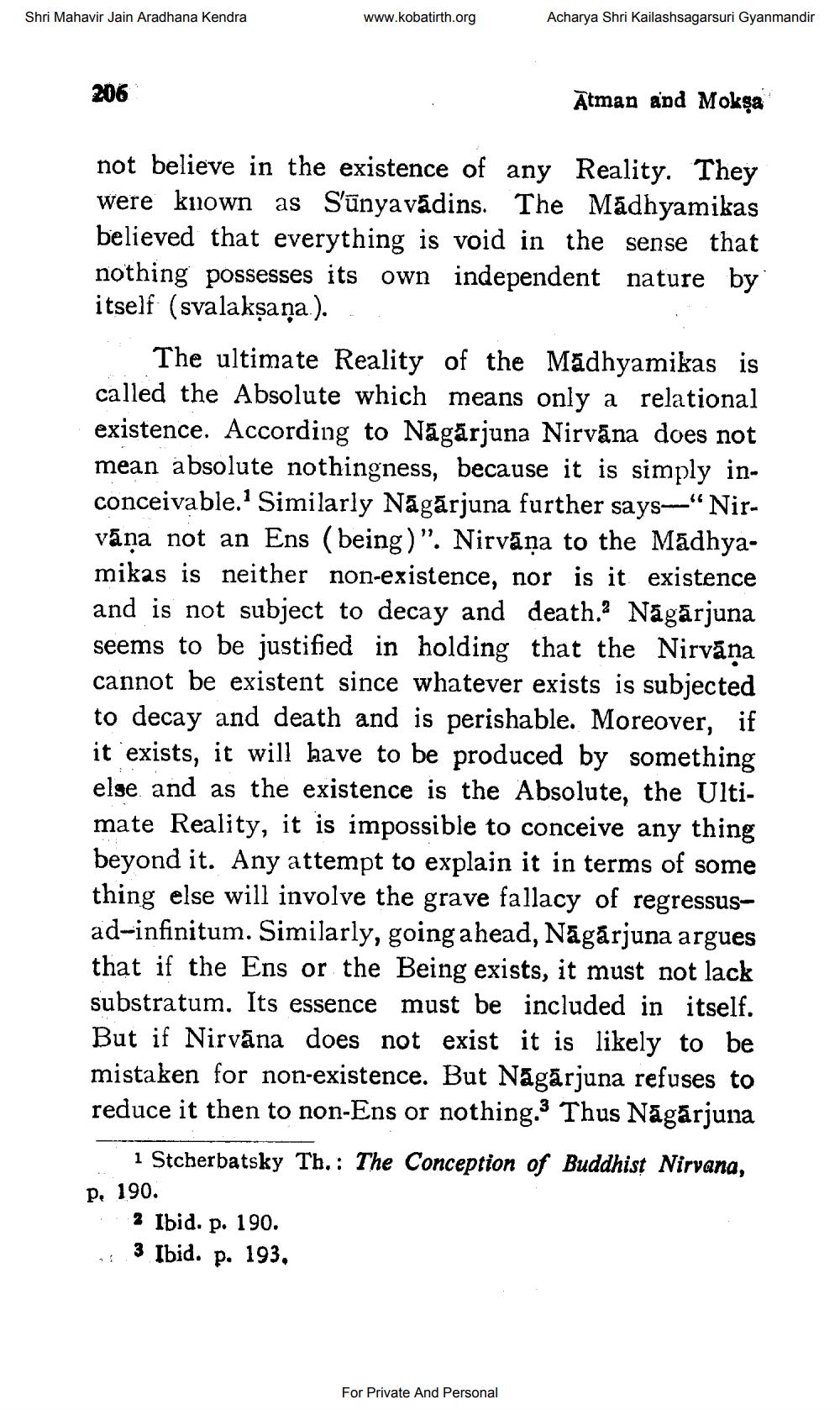________________
Shri Mahavir Jain Aradhana Kendra
www.kobatirth.org
Acharya Shri Kailashsagarsuri Gyanmandir
206
Ātman and Moksa
not believe in the existence of any Reality. They were known as S'ünyavādins. The Madhyamikas believed that everything is void in the sense that nothing possesses its own independent nature by itself (svalakṣaṇa.).
The ultimate Reality of the Madhyamikas is called the Absolute which means only a relational existence. According to Nagarjuna Nirvana does not mean absolute nothingness, because it is simply inconceivable. Similarly Nāgārjuna further says"Nirvāna not an Ens (being)”. Nirvāna to the Madhyamikas is neither non-existence, nor is it existence and is not subject to decay and death. Nāgārjuna seems to be justified in holding that the Nirvāna cannot be existent since whatever exists is subjected to decay and death and is perishable. Moreover, if it exists, it will have to be produced by something else and as the existence is the Absolute, the Ultimate Reality, it is impossible to conceive any thing beyond it. Any attempt to explain it in terms of some thing else will involve the grave fallacy of regressusad-infinitum. Similarly, going ahead, Nagarjuna argues that if the Ens or the Being exists, it must not lack substratum. Its essence must be included in itself. But if Nirvana does not exist it is likely to be mistaken for non-existence. But Nāgārjuna refuses to reduce it then to non-Ens or nothing 3 Thus Nāgārjuna
' 1 Stcherbatsky Th.: The Conception of Buddhist Nirvana, p. 190.
Ibid. p. 190. 3 Ibid. p. 193,
For Private And Personal




